As a student reviewer for the Campus Times, Jeffrey Newcorn ’73, ’77M (MD) logged more than a little overtime in the Louis B. Alexander Palestra.
There was, for example, the epic 1970 jam session with the Grateful Dead and members of Jefferson Airplane that kept students in the gymnasium until 3:30 a.m., screaming for more.
Now a psychiatrist in Greenwich, Connecticut, Newcorn was a self-described “Dead freak” and jumped at the opportunity to attend the concert.
The historic show—named the ninth greatest jam at a Grateful Dead concert by Rolling Stone magazine—was one of many opportunities that students have had to attend concerts by some of the biggest names in modern popular music.
While the Eastman School of Music has famously hosted some of the most influential artists in classical, jazz, and world music of the 20th and 21st centuries, beginning in the 1960s, the Palestra became something of a musical magnet of its own, drawing performers and fans alike to the iconic River Campus arena.
“The Palestra was just a great concert venue,” Newcorn says. “It was big enough to hold a large show but also intimate. We loved it.”
We revisit some of the more memorable concerts in that music-loving history.
Kingston Trio
October 22, 1959
The Kingston Trio helped launch a folk revival in the late 1950s and scored a number one hit in 1958 with “Tom Dooley.” Their fourth album—and first stereo studio album—The Kingston Trio at Large, was released on June 1, 1959, less than five months before they played the Palestra, and spent 15 weeks atop the Billboard charts.
The trio of Dave Guard, Nick Reynolds, and Bob Shane played to a sold-out campus audience who paid $1.80 each for tickets. The trio’s catchy tunes were bolstered by a new, $500 sound system paid for by the Social and Traditions Committee that helped eliminate echoes and distortions throughout the building.
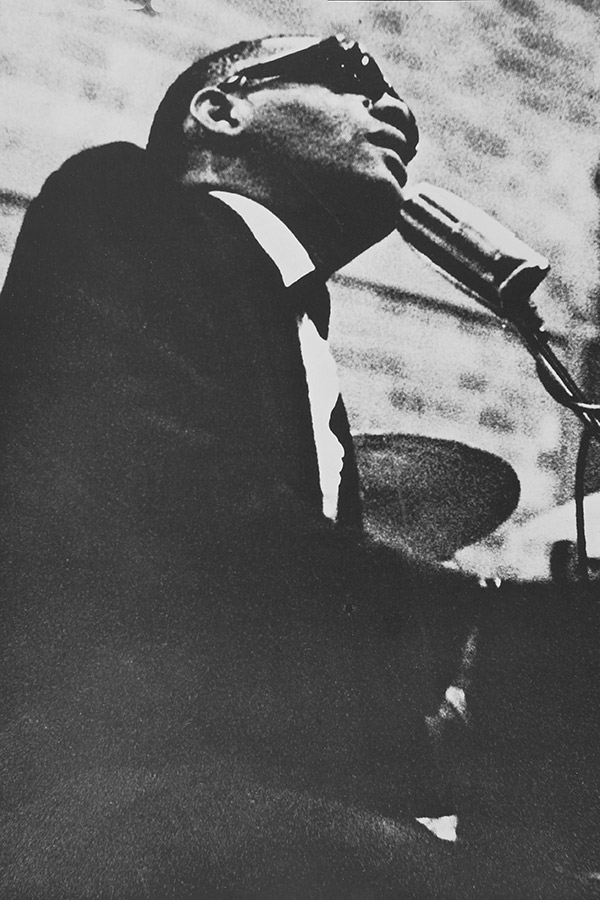 Ray Charles (Photograph: University Libraries/Department of Rare Books, Special Collections, and Preservation)
Ray Charles (Photograph: University Libraries/Department of Rare Books, Special Collections, and Preservation)Ray Charles
November 8, 1963
The concert, two weeks before the assassination of President Kennedy, was the Social and Traditions Committee’s most expensive to date, costing $5,000 (about $47,000 in today’s dollars), with tickets selling for less than $3.
The Palestra was packed, and the committee made a profit of $900. Nicknamed “The Genius” for combining blues, jazz, rhythm and blues, and gospel music, Charles remarked to committee cochair Hayward Paul ’64, that he enjoyed “the warm, enthusiastic, and controlled” crowd. Charles would return to the Palestra for another sellout show on November 3, 1966, backed by the female group the Raelettes.
By then, Charles had sold more than 15 million records and had been called “a scholar of popular music by Life magazine.
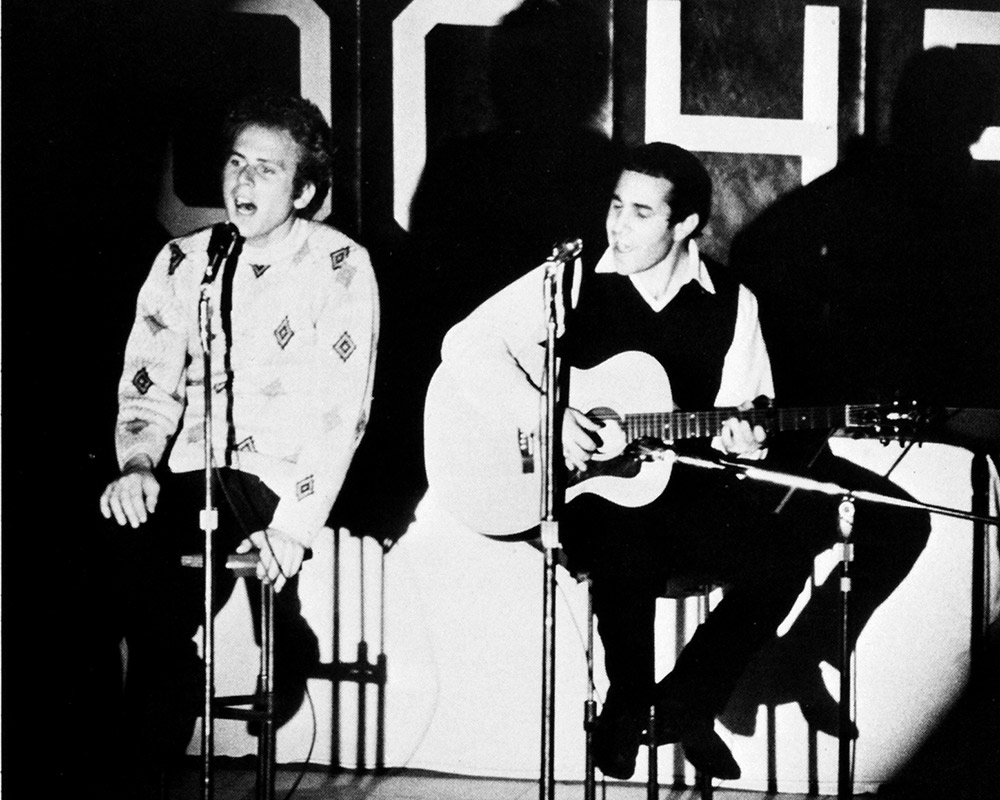 Simon & Garfunkel (Photograph: University Libraries/Department of Rare Books, Special Collections, and Preservation)
Simon & Garfunkel (Photograph: University Libraries/Department of Rare Books, Special Collections, and Preservation)Simon & Garfunkel
April 5, 1968
Paul Simon and Art Garfunkel performed before a packed Palestra one day after the assassination of civil rights leader Martin Luther King Jr.
The two opened with “Mrs. Robinson” from the hit movie The Graduate, which had been released just three months earlier. Other hits followed—“The Sound of Silence,” “America,” “Feelin’ Groovy,” and more—and the duo performed two encores. “If it’s possible to give sitting ovations after each song, then this deed was done,” wrote Campus Times reviewer Jan Zuckerman ’71.
Judy Collins
February 29, 1968
Judy Collins’s performance at the Palestra came in the aftermath of the Tet Offensive—a major turning point in the Vietnam War in which an increasing share of the American public came to believe it had been misled about the duration and human costs of the war. The folk singer performed about 20 numbers, including an antiwar song called “La Colombe.”
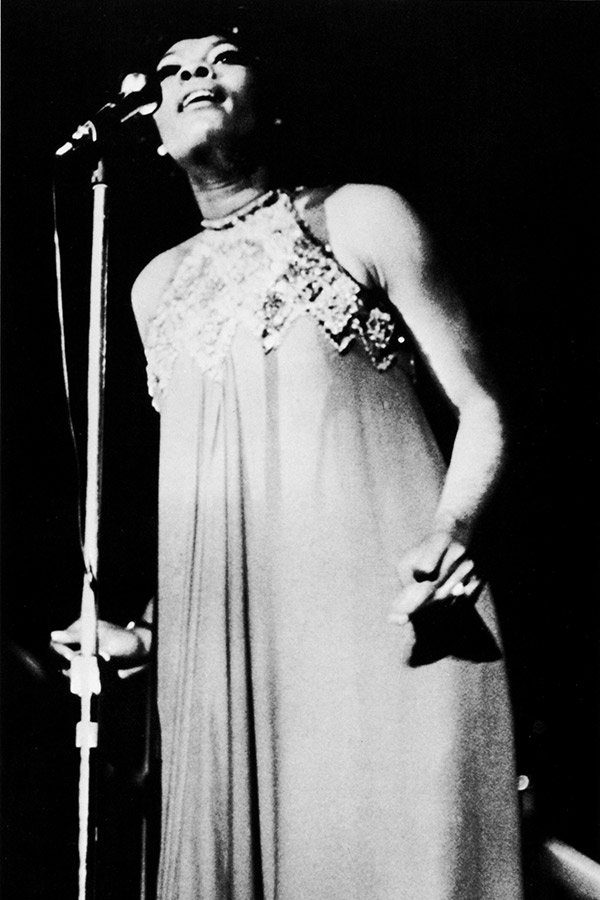 Dionne Warwick (Photograph: University Libraries/Department of Rare Books, Special Collections, and Preservation)
Dionne Warwick (Photograph: University Libraries/Department of Rare Books, Special Collections, and Preservation)Dionne Warwick
October 10, 1968
Although Warwick performed a beautiful rendition of “One Hand, One Heart” from West Side Story, which transitioned into “What the World Needs Now Is Love.” Campus Times reviewer Ray Singer ’72 found her performance “disappointing,” but noted that Warwick shone while singing “Always Something There to Remind Me.”
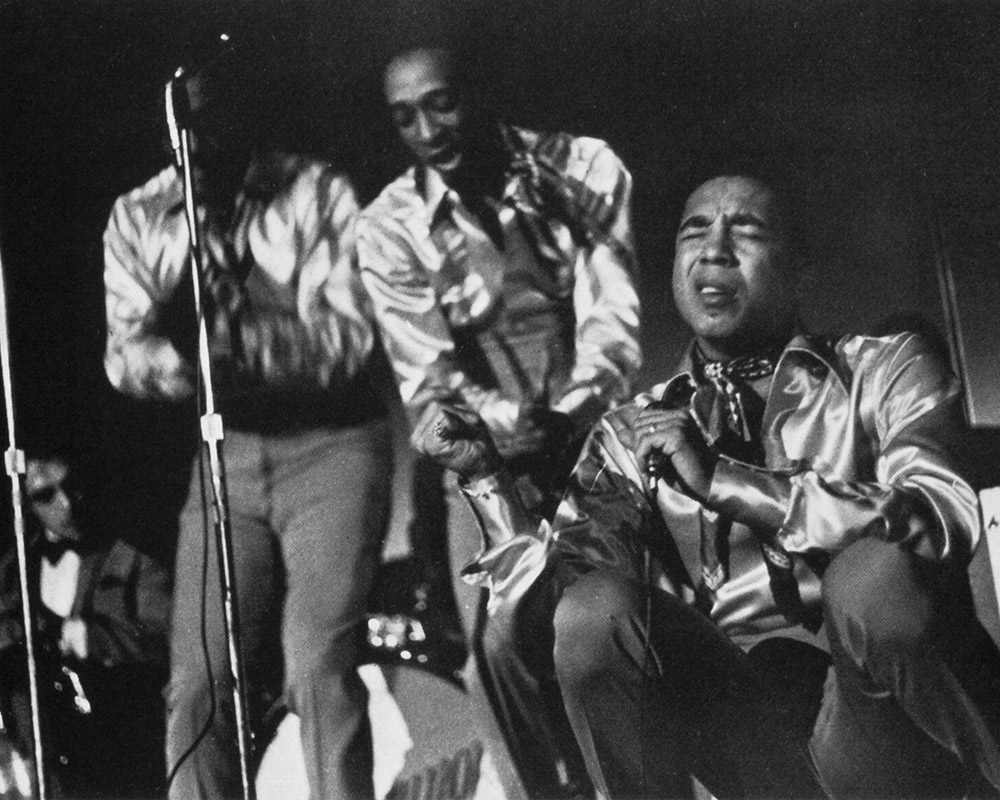 Smokey Robinson and the Miracles (Photograph: University Libraries/Department of Rare Books, Special Collections, and Preservation)
Smokey Robinson and the Miracles (Photograph: University Libraries/Department of Rare Books, Special Collections, and Preservation)Smokey Robinson and the Miracles
November 1, 1968
The smooth quartet from Detroit wowed the crowd with hits such as “Tracks of My Tears,” “I Second That Emotion,” and “Ooo Baby Baby.” But it was their rendition of “The Look of Love”—the first time they had ever performed the Burt Bacharach number live—that drew the loudest cheers. Three photographers documented the show for possible use on the group’s next album (alas, Rochester did not make the cut).
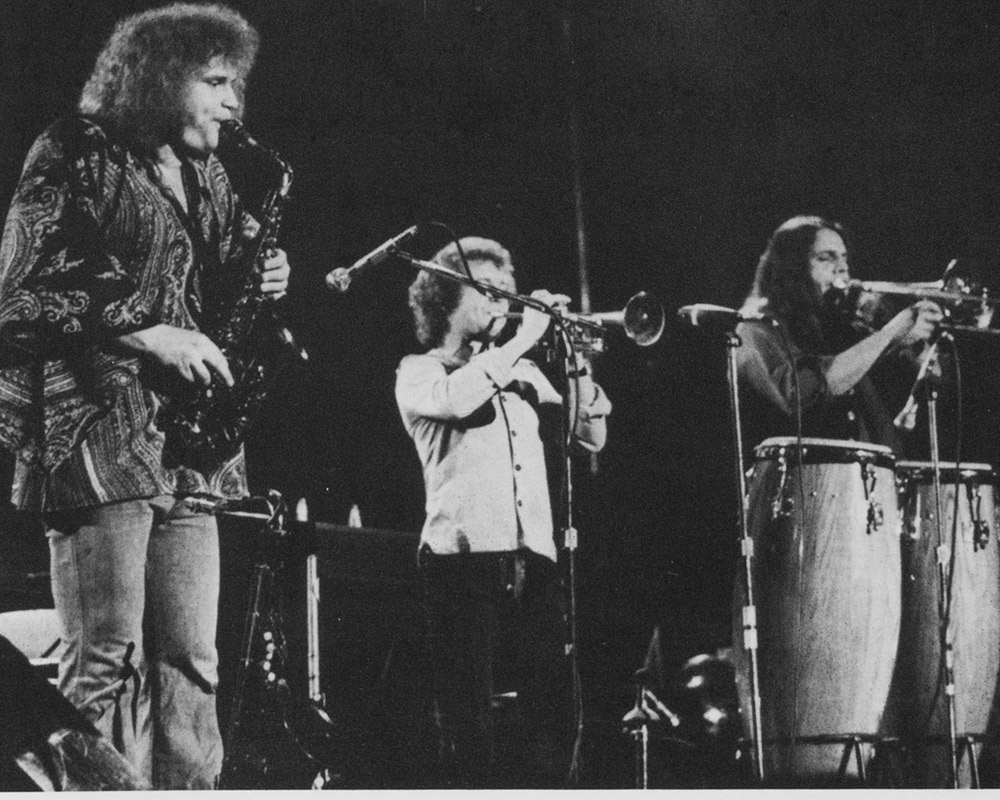 Blood, Sweat & Tears (Photograph: University Libraries/Department of Rare Books, Special Collections, and Preservation)
Blood, Sweat & Tears (Photograph: University Libraries/Department of Rare Books, Special Collections, and Preservation)Blood, Sweat & Tears
February 20, 1969
The blues-rock band had performed on the popular Ed Sullivan Show the week before and had recently released the album Blood, Sweat & Tears, with hits such as “You’ve Made Me So Very Happy” and “Spinning Wheel.” The recording would reach number one on the charts and be named Album of the Year at the 1970 Grammy Awards. Six months later, the band would enjoy headliner status at the legendary Woodstock music festival.
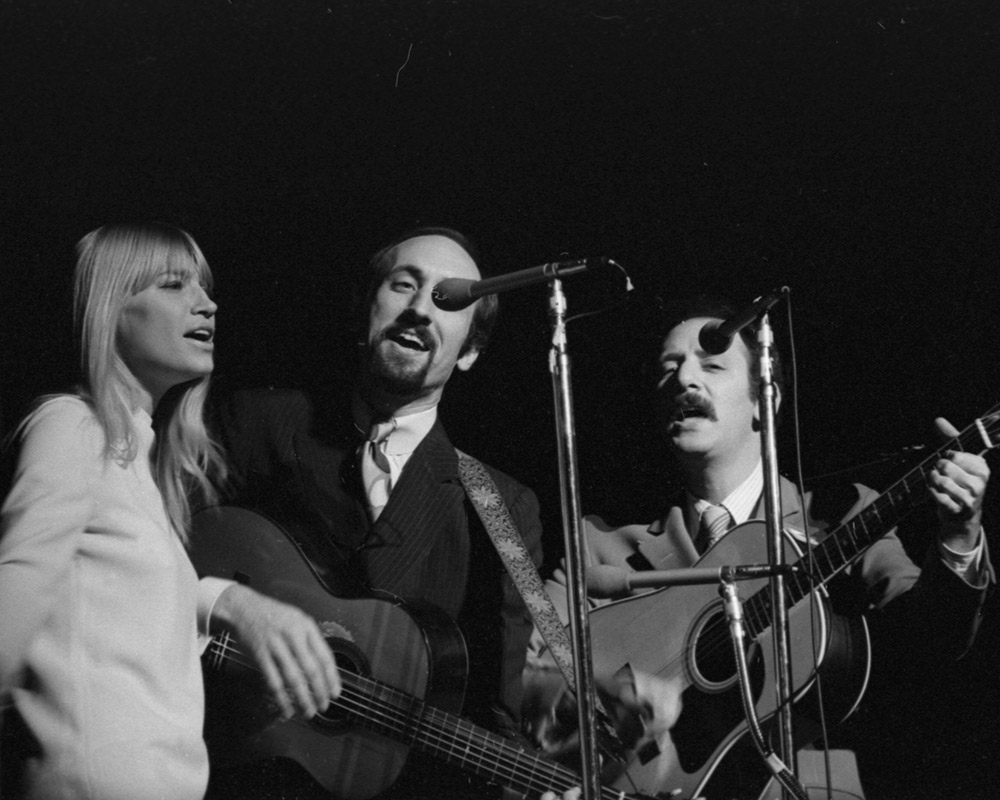 Peter, Paul and Mary (Photograph: Scott Brande ’72)
Peter, Paul and Mary (Photograph: Scott Brande ’72)Peter, Paul and Mary
April 11, 1969
The legendary folk trio turned in a masterful performance, singing hits such as “If I Had a Hammer,” “Blowin’ in the Wind,” and “Puff the Magic Dragon.” As Daniel Smirlock ’72 wrote in the Campus Times, “They put on a show so entertaining and so vital—yet so unlike the majority of concerts today—that it suddenly became 1960 instead of 1969.”
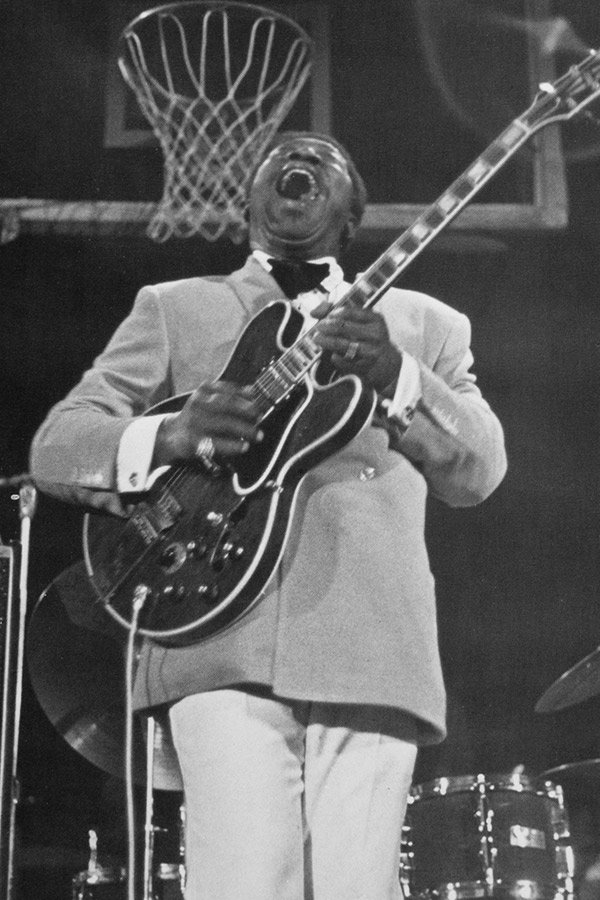 B. B. King (Photograph: University Libraries/Department of Rare Books, Special Collections, and Preservation)
B. B. King (Photograph: University Libraries/Department of Rare Books, Special Collections, and Preservation)B. B. King
September 19, 1970
More than 3,500 people showed up—perhaps the largest gathering at the Palestra to date—on a hot Saturday evening, and the heat inside forced King to take a 10-minute break.
The blues legend dedicated “Please Accept My Love” to his late friend, Jimi Hendrix, whose death had taken place just the day before. Hendrix, King said, “made a lot of us very happy while he was alive.”
The crowd was still stomping and shaking the floor when the house lights were turned on. “The gym floor seemed to take abuse equal to 750,000 basketball games,” the Campus Times noted.
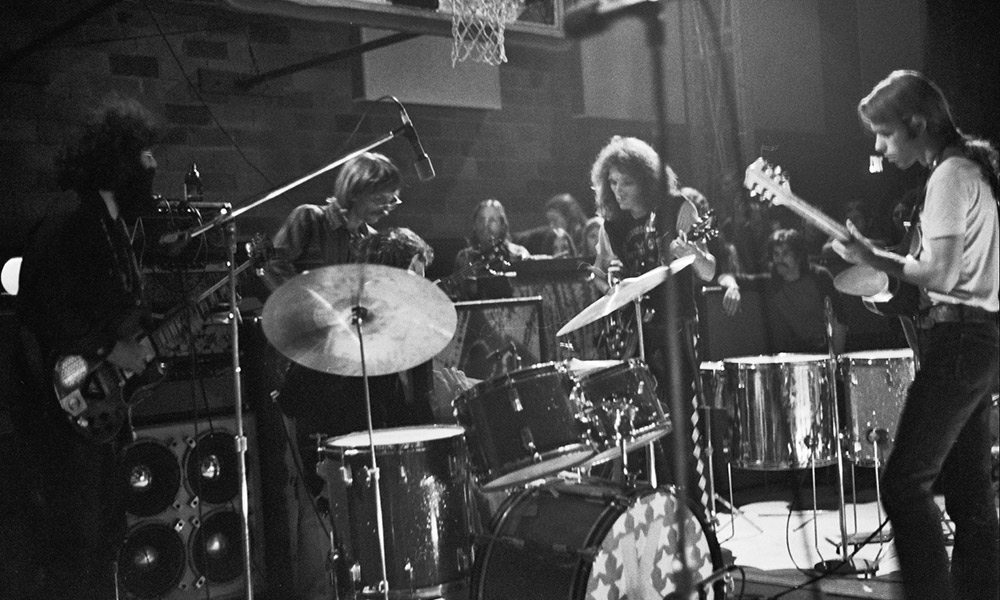 The Grateful Dead (Photograph: Vintagerockandrollphotos.com/Peter Corrigan)
The Grateful Dead (Photograph: Vintagerockandrollphotos.com/Peter Corrigan)The Grateful Dead
November 20, 1970
In what possibly is the most memorable concert in Palestra history, the Grateful Dead rocked the building with a concert that lasted until 3:30 a.m. and had fans screaming for more. After the second set, it was announced that “some friends from across town” had joined the party.
Jefferson Airplane—like the Dead, a San Francisco Bay Area–based band—had been playing two miles away at the Community War Memorial. After their show ended, guitarists Jorma Kaukonen and Jack Casady learned the Dead were still playing and headed to the Palestra.
Kaukonen and Casady jammed with the Dead for a few songs, including “It’s All Over Now” and “Reelin’ and Rockin,” before an excited crowd.
Freelance photographer Peter Corrigan remembers a “buzz passing through the crowd” after the Dead sang “Casey Jones.”
“Casady could be seen behind the Dead’s amplifiers, and when some in the crowd noticed him, (Dead guitarist) Phil Lesh began playing the opening bass line to ‘White Rabbit,’ ’’ Corrigan remembers. “Jorma came on stage with his guitar, did some tuning, and then they launched into the incredible jam. It was an unforgettable evening.”
So amazing, in fact, that Rolling Stone magazine ranked it the ninth greatest jam at a Grateful Dead concert.
The Dead would return 11 months later. Fans waited three hours outside the Palestra and were treated to a two-and-a-half-hour show.
REO Speedwagon
December 1, 1972
Blues and rock band Canned Heat was the headliner, but it was a young group from Illinois added to the bill just two days earlier that stole the show. Long before it would become a staple on the Billboard charts with hits like “Can’t Fight This Feeling,” “Time for Me to Fly,” and “Keep On Loving You.”
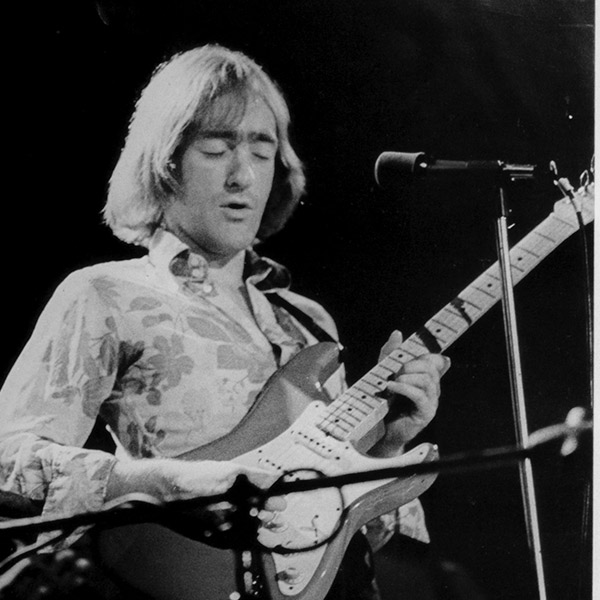 Dave Mason (Photograph: University Libraries/Department of Rare Books, Special Collections, and Preservation)
Dave Mason (Photograph: University Libraries/Department of Rare Books, Special Collections, and Preservation)Dave Mason
October 6, 1973
The former lead singer for Traffic played to a half-empty Palestra. “What a waste!” wrote Vincent Frank ’74 in the Campus Times. “You passed up a chance to see one of the most underrated rock performers play an evening of some of the greatest music you’d ever want to hear.”
Frank predicted Rochester students would regret the decision. “Dave Mason won’t have to play to half-filled gyms very much longer,” he wrote. “Not if he keeps delivering such great performances.”
Frank was right. Mason remains a popular act on tour and in 2004 was inducted into the Rock and Roll Hall of Fame.
The Temptations
March 31, 1974
The Temptations came in fresh from their win as Favorite Soul/R&B Group at the American Music Awards six weeks earlier. Sponsored by the Black Students’ Union, the performance featured the Temptations accompanied by a Motown rhythm section and a nine-piece brass orchestra and included what the Campus Times called “a brief but intense set of about 15 of their greatest hits,” including “Can’t Get Next To You,” “Get Ready,” “The Way You Do The Things You Do,” and “My Girl.”
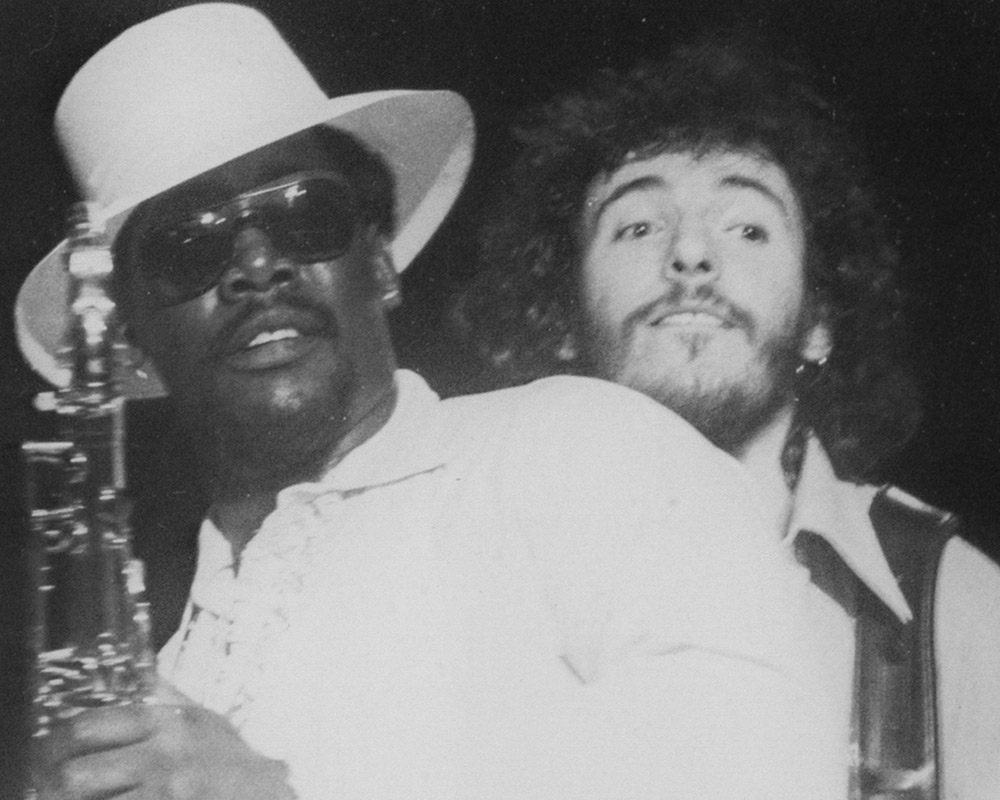 Clarence Clemons and Bruce Springsteen (Photograph: University Libraries/Department of Rare Books, Special Collections, and Preservation)
Clarence Clemons and Bruce Springsteen (Photograph: University Libraries/Department of Rare Books, Special Collections, and Preservation)Peter Frampton, Bruce Springsteen, Billy Joel
February to November, 1976
There was arguably no greater year for concerts at the Palestra than 1976, when three budding superstars performed within a nine-month period.
Peter Frampton played before a capacity crowd of 3,000 on February 7, 1976—just one month after Frampton Comes Alive! was released.
It would be the best-selling album of that year, with hits such as “Show Me the Way,” “Baby I Love Your Way,” and “Do You Feel Like I Do?”
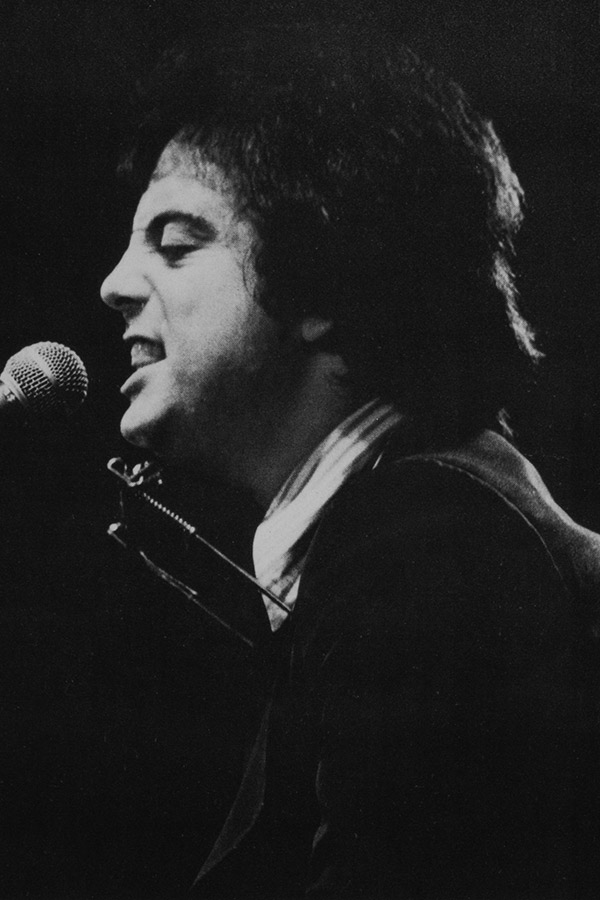 Billy Joel (Photograph: University Libraries/Department of Rare Books, Special Collections, and Preservation)
Billy Joel (Photograph: University Libraries/Department of Rare Books, Special Collections, and Preservation)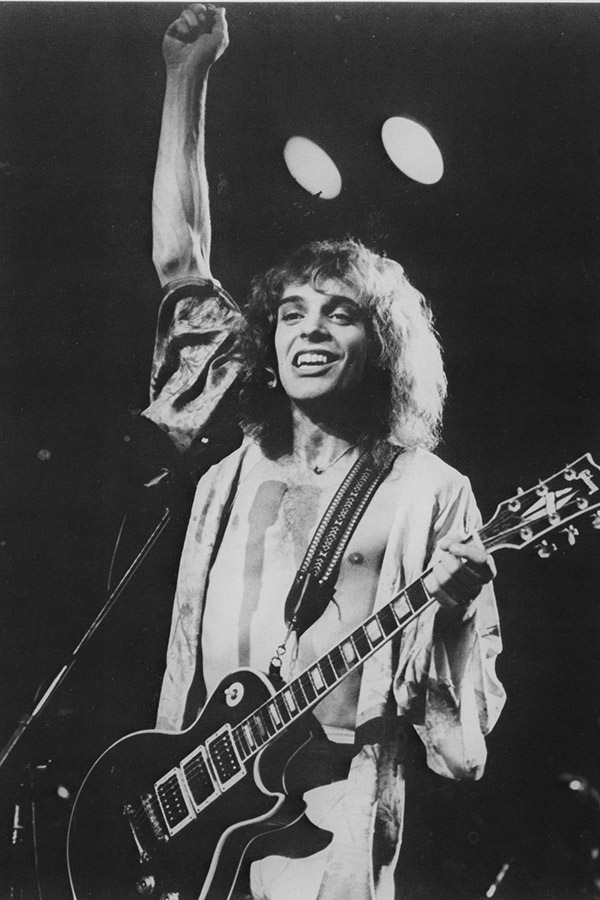 Peter Frampton (Photograph: University Libraries/Department of Rare Books, Special Collections, and Preservation)
Peter Frampton (Photograph: University Libraries/Department of Rare Books, Special Collections, and Preservation)Frampton strode onstage in a yellow outfit, looking “like a lean Roger Daltrey,” according to the Campus Times review, and performed for nearly three hours. “Frampton put on the most electrifying rock performance the Palestra has seen in years,” the Campus Times wrote.
Two months later, on April 17, Bruce Springsteen and the E Street Band rocked the arena with another two-and-a-half-hour show.
The bearded Springsteen, whom the student newspaper called “a 26-year-old rock and roll poet from New Jersey,” wore a blue suit and turned in an energetic performance, with songs such as “Thunder Road,” “Growin’ Up,” and “Born To Run.”
“Bruce Springsteen turned the Palestra into a sweat rock theater Saturday night,” the Campus Times wrote.
The 1976 trifecta was completed on November 7, when a rising star from the Bronx named Billy Joel played before 2,000 fans, a strong crowd but 500 shy of a sellout.
The concert cost the Concert Committee $12,500, and $5,200 went to Joel and his band. The rest was used to cover production and other costs. Tickets were $3.50 for students and $4.50 for the public.
Joel played “Angry Young Man,” “Piano Man,” and “New York State of Mind” among other songs.
He made the crowd laugh with an impression of Jimmy Carter, who had been elected president just days earlier.
“Last night at the Palestra, Mr. Joel played and sang with a fury and confidence few performers could match,” reviewer Brian Kelly wrote in the Campus Times.
“After his fourth encore, Joel shook as many hands as he could grab and took a deep bow before leaving the court.”
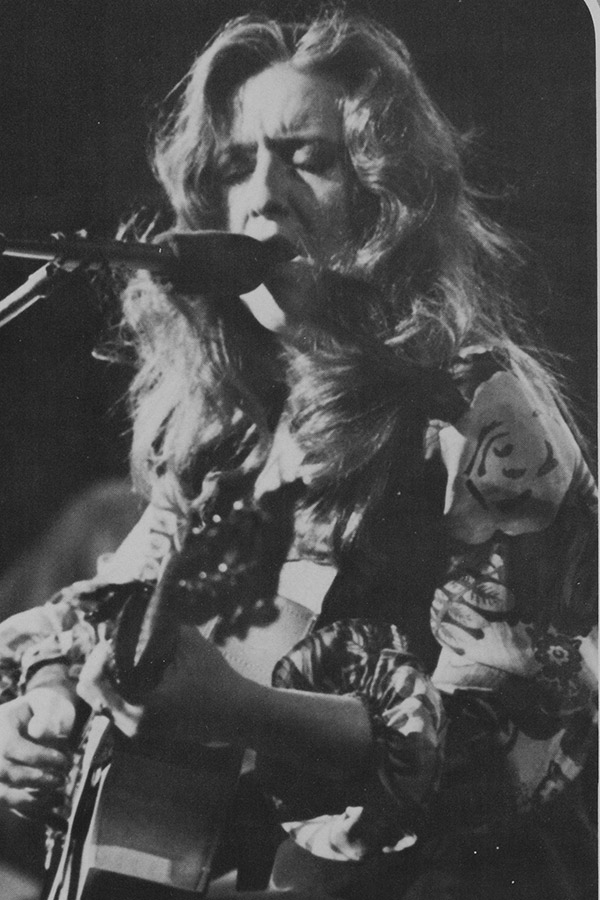 Bonnie Raitt (Photograph: University Libraries/Department of Rare Books, Special Collections, and Preservation)
Bonnie Raitt (Photograph: University Libraries/Department of Rare Books, Special Collections, and Preservation)Bonnie Raitt
March 2, 1977
Raitt gave Rochester something to talk about with a 15-song concert that included two encores and a preview of what would be her first hit: a cover of “Runaway,” the song made famous by Del Shannon in 1961. The song was included on Raitt’s sixth album, Sweet Forgiveness, which was released a month after her Palestra concert.
The Kinks
December 8, 1977
The English group was one of the most influential bands of the 1960s, and their song “You Really Got Me” reached number one on the charts in 1964. The band, led by brothers Ray and Dave Davies, played at the Palestra late in 1977 and again for Dandelion Weekend in 1990.
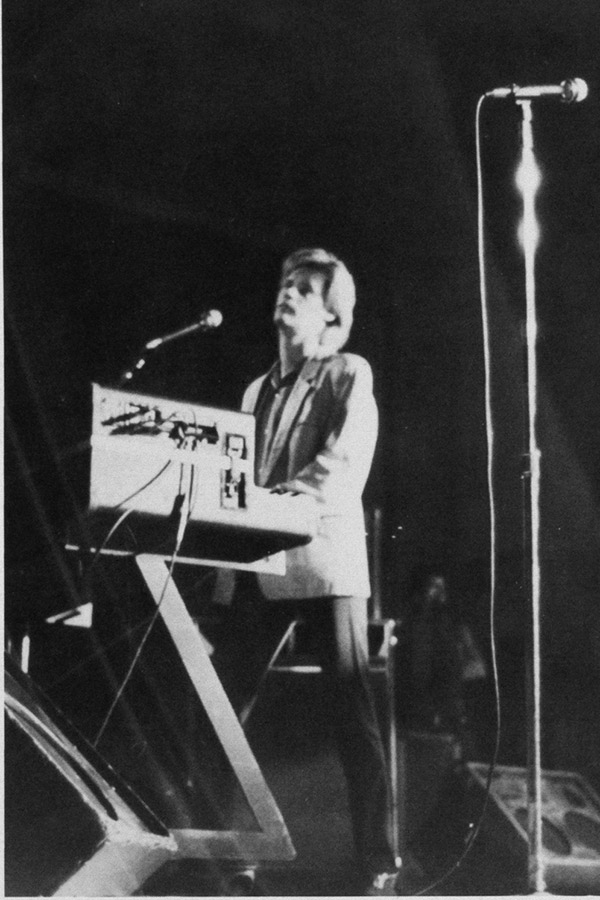 Daryl Hall of Hall and Oates (Photograph: University Libraries/Department of Rare Books, Special Collections, and Preservation)
Daryl Hall of Hall and Oates (Photograph: University Libraries/Department of Rare Books, Special Collections, and Preservation)Hall and Oates
November 8, 1980
The popular duo opened their Saturday evening show with a rarity—John Oates on lead vocals—for “How Does It Feel to Be Back,” which had peaked at number 30 on the Billboard charts earlier that year. Other hits followed, including “Rich Girl,” “She’s Gone,” and “Sara Smile.” Campus Times reviewer John Swanson ’83 found the show “solidly entertaining” but noted that “many people considered the $7.50 ticket price too high.”
R.E.M.
April 13, 1983
The alternative rock band later scored chart hits with “Losing My Religion,” “Everybody Hurts,” and “It’s the End of the World As We Know It.” But in 1983, they were just a three-year-old group struggling for success.
R.E.M. opened for the English Beat, which fused Latin, pop, soul, reggae and punk rock, as part of Dandelion Weekend. The Campus Times review was not kind: “Their biggest handicap seemed to be a lead singer (Michael Stipe) who was hard to understand in the first place and pseudo-esoteric lyrics such as ‘Gardening at Night’ in the second.”
10,000 Maniacs, Violent Femmes, the Fleshtones
February 16, 1985
The Fleshtones were the biggest “crowd pleasers” according to Campus Times reviewer Chris Bourne, who correctly predicted that the obscure opening act—10,000 Maniacs—had the brightest future. “(Lead singer) Natalie Merchant has great style on stage and is altogether pleasant to watch,” Bourne wrote. Four albums by 10,000 Maniacs would reach the top 50 in the US, and their 1989 hit “These Are Days” reached number one on the Billboard charts.
The Ramones
April 12, 1986
The New York City–based punk rock band put on a loud, spirited concert for nearly 2,000 fans. The tone was set by opening act the Mosquitos, who emerged from “manhole covers” on the Palestra floor.
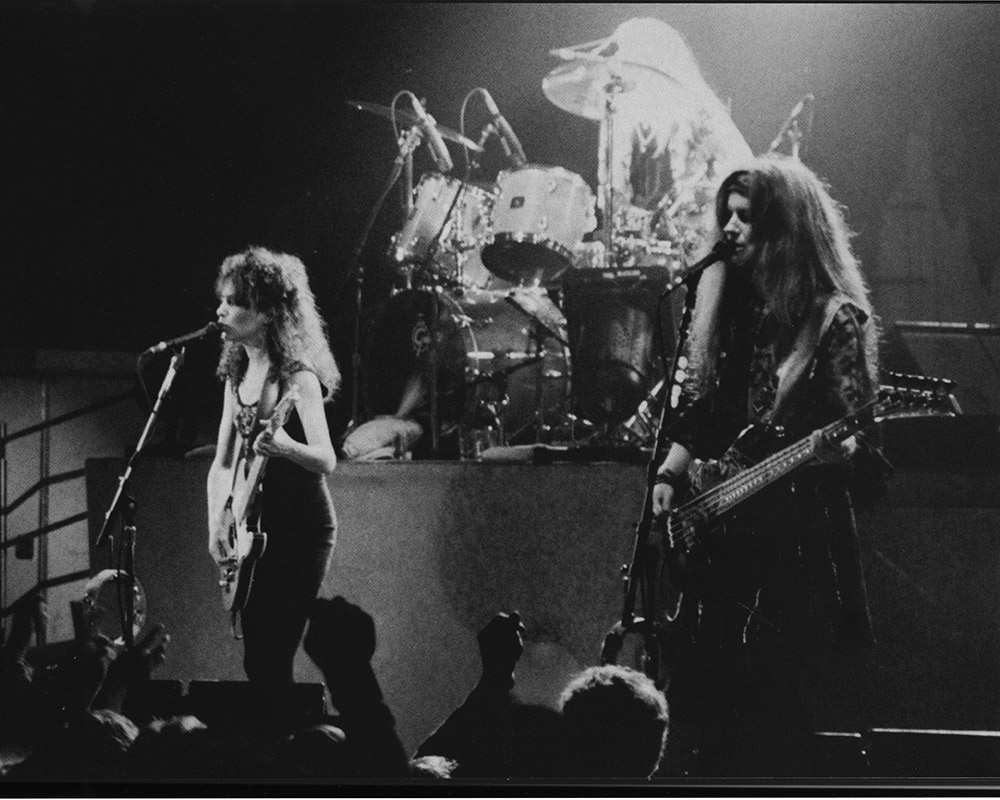 The Bangles (Photograph: University Libraries/Department of Rare Books, Special Collections, and Preservation)
The Bangles (Photograph: University Libraries/Department of Rare Books, Special Collections, and Preservation)The Bangles
March 31, 1989
With hits like “Manic Monday” and “Walk Like an Egyptian,” the band performed before a crowd that included hundreds of screaming teenagers. “Thanks for the nice spring evening, Rochester!” lead guitarist Vicki Peterson shouted out on a chilly evening. “We’re not really used to this since we’re from Southern California, but we’ll try our best to heat things up.”
The next day, April 1, “Eternal Flame” became the number one pop song in the US. Six months later, the Bangles broke up.
Goo Goo Dolls
October 7, 1995
The alternative band from Buffalo came to the Palestra one month after the release of their single “Name.” That song would reach number one on the Billboard charts and remains one of their biggest hits. The album A Boy Named Goo was released seven months earlier and was certified double platinum (two million copies sold) by year’s end.
Beck
March 29, 1997
Beck David Hansen—known simply as “Beck”—was the headliner for a triple act concert that began with Atari Teenage Riot, who took the stage at 8 p.m. “and did not stop swearing or screaming for a half hour,” Campus Times reviewer Otis Hart ’97 wrote.
They were followed by the Cardigans, who played their hugely popular song “Lovefood.” At 10 p.m., Beck took the stage, just a month after winning a Grammy Award for Best Alternative Music Performance. “Beck was amazing,” says Anne-Marie Algier ’16W (EdD), associate dean of students at the College. “He walked through the crowd in a hooded sweatshirt when Atari Teenage Riot played, and no one knew he was there. When he returned backstage, he said, ‘These people deserve a great show, and I am going to give them all I’ve got!’ ”
Hart wrote: “Beck put on what might have been the best concert UR has ever held.” Algier agrees. “That was the best sounding show in that space,” she says. “Beck brought his own soundboard, and it was top of the line.”
Lifehouse, Michelle Branch, the Calling
September 23, 2001
A trio of rising acts played the Palestra just 12 days after the 9/11 terrorist attacks. Lifehouse had a big hit with “Hanging By a Moment,” which peaked at number two on the Billboard Top 100 that June. Branch’s “Everywhere” was climbing the charts and would peak at 12 on Billboard’s Top 100 that November. The video from the song won the 2002 MTV Video Music Awards “Viewer’s Choice Award.”
Janelle Monáe
October 1, 2011
The multitalented singer, songwriter, science fiction author, and actor came to the Palestra just a year after winning an MTV Video Music Award. She would go on to earn eight Grammy Award nominations and win the Billboard Women in Music Rising Star Award in 2015.

